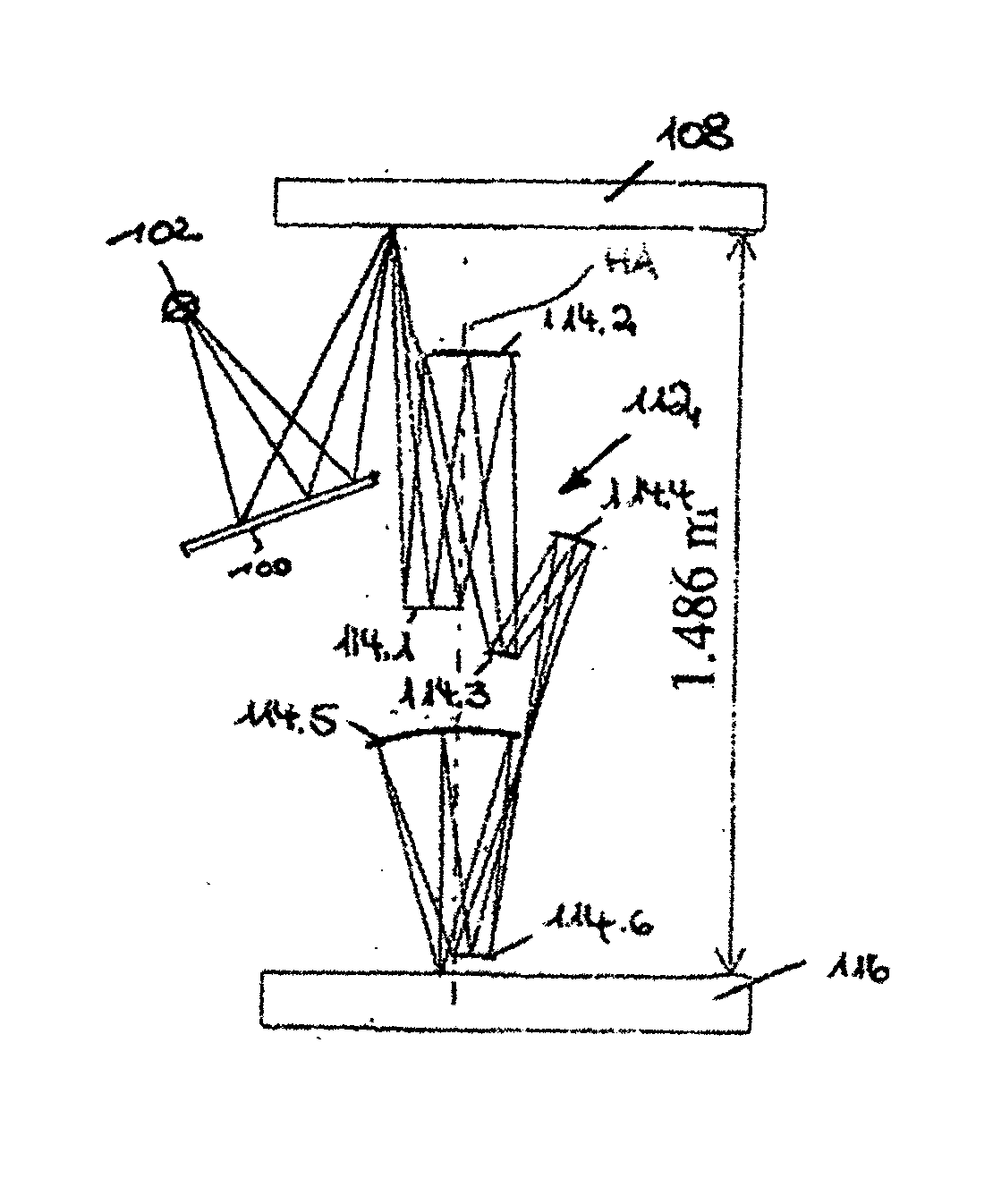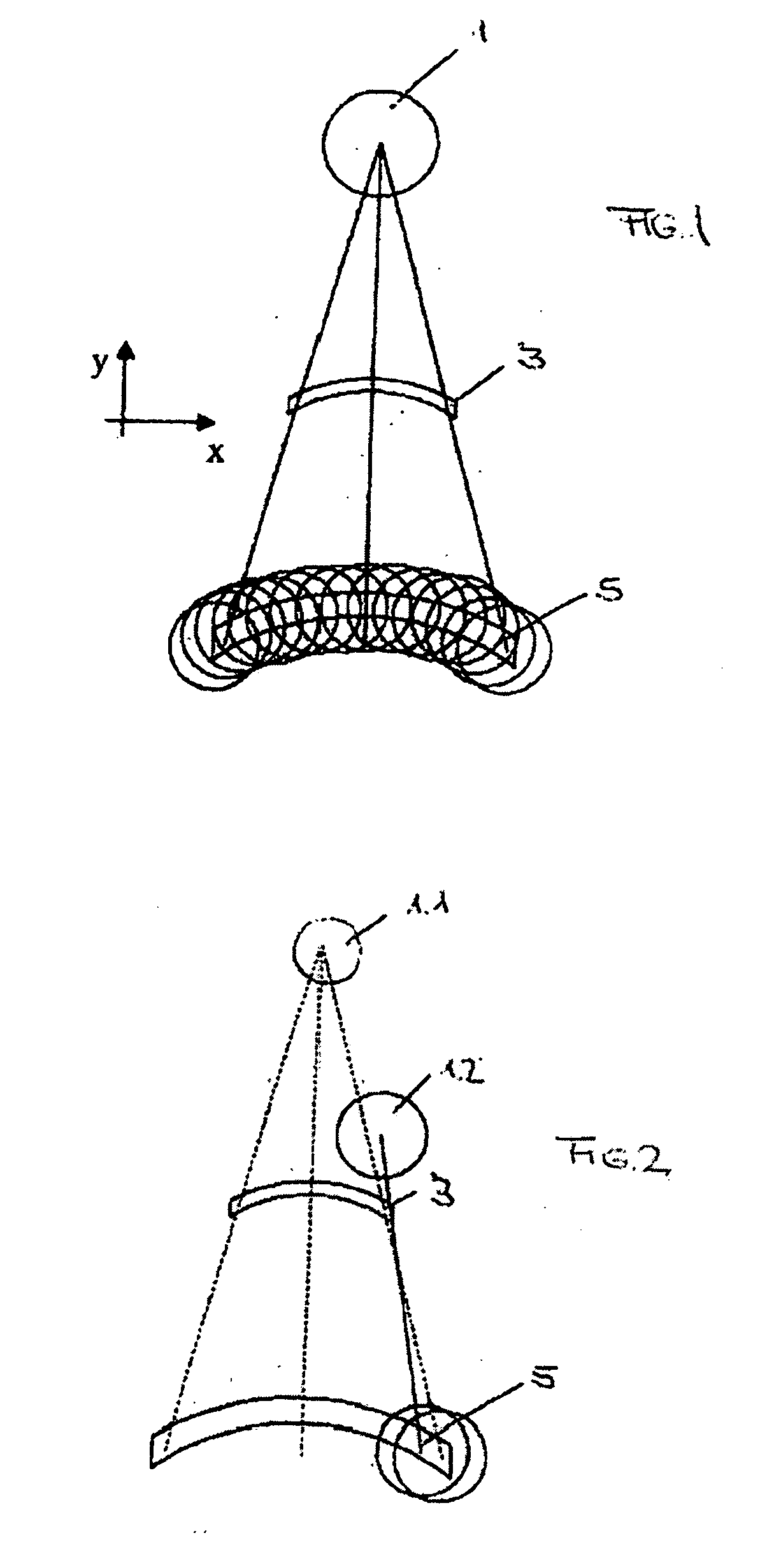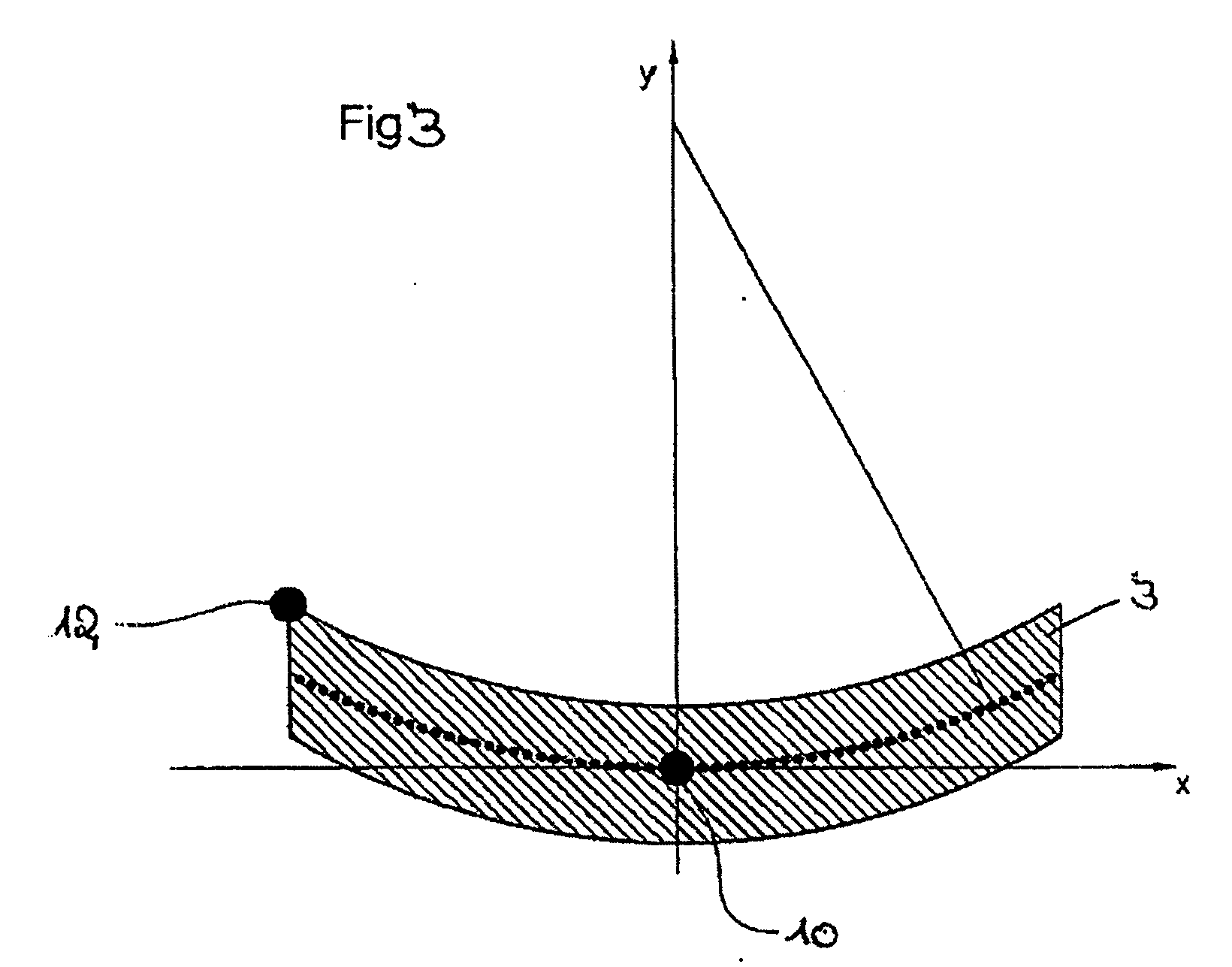Optical element for an illumination system
an illumination system and optical element technology, applied in the field of optical element for illumination system, can solve the problems of increasing light loss, plurality of optical components, and collecting does not produce an image of the light source in finite space, so as to reduce the number of components and minimize light loss
- Summary
- Abstract
- Description
- Claims
- Application Information
AI Technical Summary
Benefits of technology
Problems solved by technology
Method used
Image
Examples
Embodiment Construction
[0068] With the optical element according to the invention, a bundle focussed in a field plane will be deflected in such a way that an annular field segment will be formed in the field plane, and also—considered from a specific field point, for example, of an annular field segment—a pupil is illuminated, for example, of an illumination system in a pre given form, e.g., an annular or quadrupolar form.
[0069] For this purpose, a specific amount of incident light is guided into the pupil of the illumination system which belongs to a field point of the field of an illumination system. This can be done, for example, by means of small planar facets. The planar facets are thus disposed in such a way that the field is illuminated homogeneously in the field plane and a homogeneously filled pupil is formed for each field point, i.e., the pupil is filled with discrete, but well, distributed “points”. This principle is shown in FIG. 1, which is also designated as the principle of the specular r...
PUM
 Login to View More
Login to View More Abstract
Description
Claims
Application Information
 Login to View More
Login to View More - R&D
- Intellectual Property
- Life Sciences
- Materials
- Tech Scout
- Unparalleled Data Quality
- Higher Quality Content
- 60% Fewer Hallucinations
Browse by: Latest US Patents, China's latest patents, Technical Efficacy Thesaurus, Application Domain, Technology Topic, Popular Technical Reports.
© 2025 PatSnap. All rights reserved.Legal|Privacy policy|Modern Slavery Act Transparency Statement|Sitemap|About US| Contact US: help@patsnap.com



